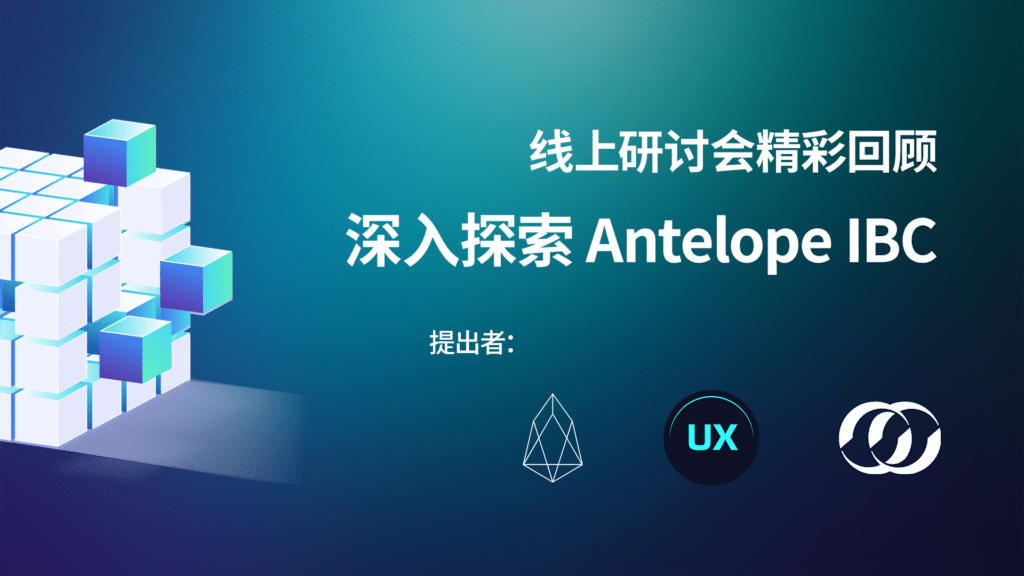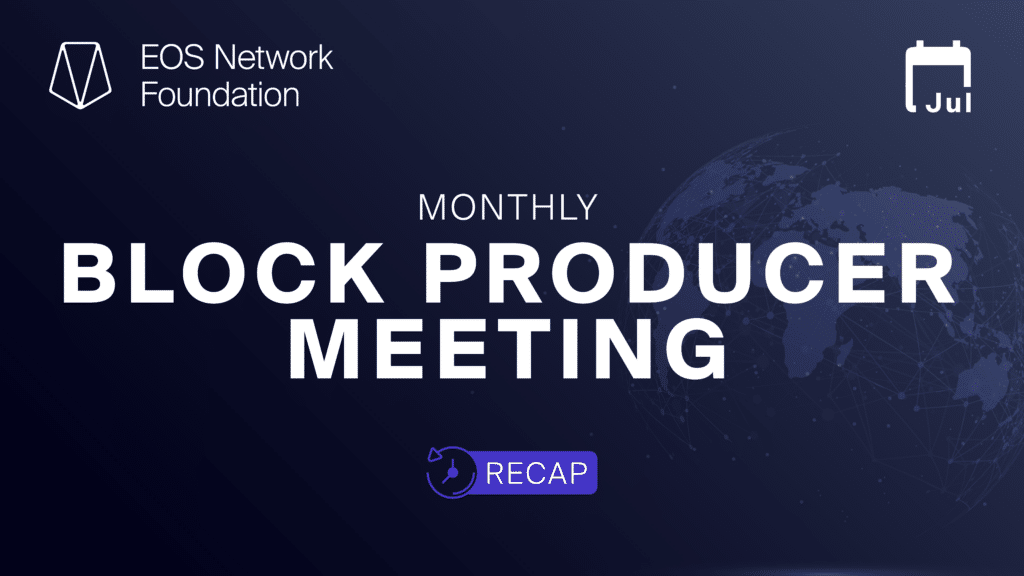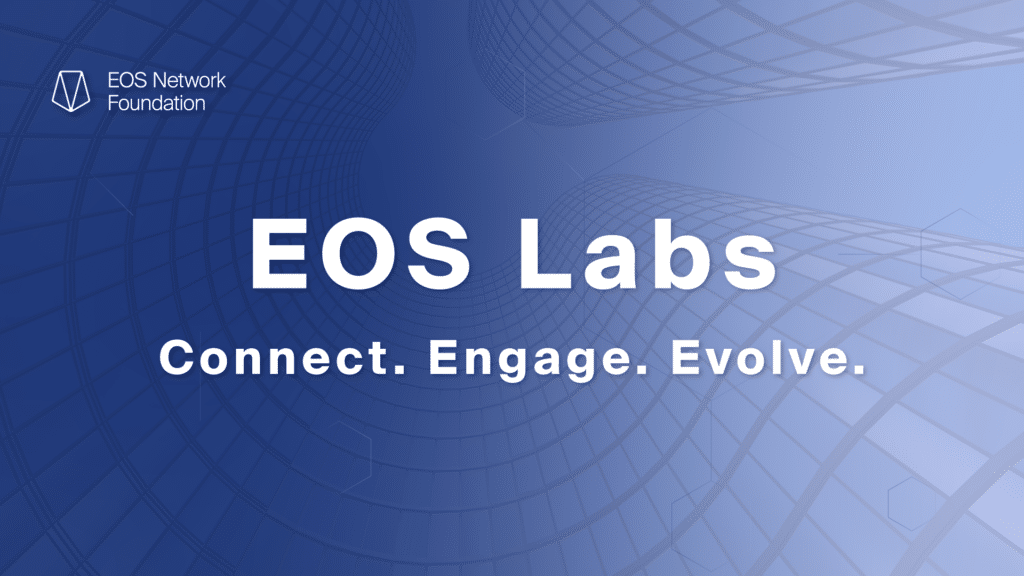During the August 17th Chinese EOS Fireside Chat hosted on the EOS Community Discord, a discussion was held with Huaqiang Wen, founder of EOS Labs. Moderated by Beatrice, Community Manager of the EOS Network Foundation, and Eleven, Community Manager of the Pomelo Chinese community, this insightful discussion covered several topics of high interest within the community, including the establishment of EOS Labs, the temporary suspension of the Pomelo, and other trending topics in the EOS ecosystem.
Details about the Establishment of EOS Labs and Community Q&A
Question 1: When did EOS Labs begin? What approach will EOS Labs take? Which track will EOS Labs focus more on? What’s the strategy for supporting EOS DeFi?
Huaqiang Wen:
Firstly, the EOS Labs team formation and project discussions are already underway. We welcome everyone to stay tuned for updates.
Secondly, EOS Labs follows a “data-driven” approach in its activities. We will monitor key data metrics such as Total Value Locked (TVL), daily trading volume, daily active addresses, and daily active users to make more informed decisions and we will effectively integrate this data to the EOS ecosystem.
Regarding the focus tracks, EOS Labs pays close attention to DeFi and GameFi. Of course, the market is constantly changing, so we will also closely focus on emerging and popular projects and trends in the blockchain market such as RWA. Our team will stay progressive and look for more high-quality projects to join the EOS ecosystem.
Lastly, DeFi is red-hot. Its significance and complexity are self-evident. So our strategy for EOS DeFi incubation will also be intricate. The approach taken by EOS Labs will be different from the Pomelo and ENF Grant Framework. We will provide more direct investment and support to help potential projects.
Question 2: Does EOS Labs Have a Comprehensive KPI Evaluation Framework?
Huaqiang Wen:
It appears that the inquirer has high expectations regarding EOS Labs’ endeavors, potentially even contemplating a hands-on approach in overseeing our operations. Presently, however, the operations of EOS Labs do not necessitate direct oversight. Many initiatives are in their infancy, and our primary focus revolves around identifying avenues for innovation and advancement.
Furthermore, our gauge for assessing the efficacy of EOS Labs’ initiatives lies in the continual augmentation of on-chain activities, Total Value Locked (TVL), and the proliferation of associated projects. These metrics will serve as touchstones for evaluation and refinement.
However, it’s crucial to acknowledge, drawing from the trajectory of development in other blockchain ecosystems and my personal experience, Key Performance Indicator (KPI) assessments can sometimes be a double-edged sword. Therefore, within our operational framework, we intend to implement a KPI system for tasks that can be quantified in a straightforward manner—such as the number of project engagements. However, for tasks that demand greater flexibility and resist facile quantification via KPIs, we recognize the limitations of relying solely on such assessments. This is particularly relevant when crafting objectives that involve intricate decision-making, such as project investment or collaborative partnerships.
Question 3: Can the native chain receive funding? Will EOS Labs provide different funding for Native and EVM?
Huaqiang Wen:
Firstly, EOS Labs is currently not considering open funding channels similar to the previous direct funding framework. Regardless of whether it’s a native application or EVM, or whether it’s an application or infrastructure, EOS Labs will follow the investment route. Our short-term focus will be on EVM, but this doesn’t mean we are giving up on the development of the native chain ecosystem. We won’t reject any native applications.
From another perspective, you can consider EVM as EOS’s largest native application. We’ve chosen to prioritize EOS EVM in our work, partly because the EVM ecosystem has more developers, tools, users, and options, making it more developer-friendly.
So, it’s important not to perceive EOS native and EOS EVM as competing entities. When making investment assessments, we won’t differentiate between them. It’s precisely due to the robust performance and consensus support of Antelope that EOS EVM, as an application on the native EOS chain, has the opportunity to attract more developers.
Question 4: Will EOS Labs’ funding information be transparent and publicly available?
Huaqiang Wen:
We place great importance on the transparency of funding information. We plan to collaborate with third-party auditing firms and regularly publish audit reports. However, a challenge we currently face is that most auditing practices do not support blockchain audits. Nevertheless, we are actively reaching out and committed to finding a solution to this issue.
Question 5: For applications outside the EOS ecosystem that are profitable, are they willing to go through the effort to migrate to EOS for relatively small rewards? What confidence does EOS Labs have in attracting these well-known applications?
Huaqiang Wen:
Many projects adopt a multi-chain deployment strategy to attract more users. For these projects, entering EOS is also an expectation to gain more users. Therefore, what EOS Labs needs to do most is to increase on-chain activity and the number of users. We will work in stages to achieve this. Once the data improves, many projects will naturally come.
Currently, it’s indeed challenging to attract top-level applications. Building strength internally is crucial; win-win is the best foundation for collaboration. EOS Labs’ work is to create such win-win opportunities together with the EOS community. I hope everyone won’t remain indifferent bystanders but will unite and overcome challenges together. We also welcome more community members to join us, supervise us, and recommend good projects to us through the email provided below.
For Ecosystem Projects:
Projects can submit their Pitch Deck to [email protected], and EOS Labs will arrange for dedicated personnel to engage with the projects.
We also warmly welcome projects from other public chain ecosystems to join EOS EVM.
For Community Members:
We encourage community members to stay informed about the latest developments and new protocols of EOS EVM. EOS Labs appreciates any feedback provided by the community.
We also welcome individuals interested in joining the EOS Labs team to submit their resumes to [email protected], and we will carefully review them.
Question 6: Could you please explain the relationship between the EOS Network Foundation (ENF), EOS Network Ventures (ENV), and EOS Labs?
Huaqiang Wen:
The EOS Network Foundation primarily handles the development and infrastructure-related work of Antelope; ENV is a pure investment entity. On the other hand, EOS Labs is responsible for the development of the EOS ecosystem. This includes attracting excellent projects to EOS, providing technical guidance, assisting them in obtaining investments, and jointly conducting marketing campaigns, among other tasks. Additionally, EOS Labs also assists ENV in pre-investment and post-investment activities. Therefore, the three entities collaborate, complement each other, and collectively contribute to building the ecosystem.
Question 7: How does EOS Labs evaluate whether a project is worth investing in?
Huaqiang Wen:
EOS Labs does not directly engage in investments; this work is done in collaboration with ENV. However, during this process, EOS Labs assists in many aspects. Investment is a complex task without a precise standard, and the same project can yield different outcomes at different times.
Currently, our team has developed a project evaluation template to assess whether a project is worth investing in. In simple terms, it can be summarized as follows:
For early-stage projects, the primary focus is on the potential of the team and the industry track. Of course, the economic model, technical capabilities, and alignment with the current development direction of EOS are also considered. For example, projects that are inherently related to DeFi or gaming might be preferred. In the middle-to-later stages of a project, we look at performance data, competitive performance, the team’s track record, project finances, and funding status, among other factors.
Question 8: While introducing new projects, will EOS Labs also collaborate with existing projects?
Huaqiang Wen:
As long as a project’s goals align with our development objectives, aiming to enhance EOS’s active data or TVL, we will evaluate and consider it. This applies regardless of whether the project is new or existing.
Question 9: Since EOS Labs is a profit-oriented organization, how does the profit aspect contribute back to the mainnet or the community?
Huaqiang Wen:
EOS Labs’ operational funds come from the community, and it certainly contributes back to the community. This is unrelated to whether it is a profit-oriented organization.
As for why EOS Labs is set up as a profit-oriented organization, similar controversies have arisen within the Ethereum founding team. Currently, ENF is a non-profit organization responsible for EOS ecosystem infrastructure or Antelope’s development, while EOS Labs focuses on enriching applications on Antelope.
I believe establishing a profit-oriented organization makes it easier to motivate our team to overcome development bottlenecks. In the future, if profits are generated, they will be reinvested into the ecosystem. Our ultimate goal is to develop a sustainable ecosystem, rather than constantly seeking operational funding from the community.
Question 10: Has EOS Labs already been in discussions with some potential projects?
Huaqiang Wen:
I can share that we have received many project inquiries, and there are currently discussions underway with around a dozen potential projects.
Question 11: What are the short-term goals and primary tasks of EOS Labs?
Huaqiang Wen:
EOS Labs’ work in ecosystem development will likely be divided into several stages:
Short-term: The goal is to identify and select projects that align with our development philosophy. We will then achieve breakthroughs in certain fields to restore on-chain activity and reach a certain TVL.
Mid-term: Once on-chain activity reaches a certain scale, we will focus on establishing connections and seeking partnerships with centralized exchanges (CEX), leading DeFi protocols, investment institutions, and others to explore collaborative win-win opportunities.
Long-term: We aim to have a comprehensive understanding of various sectors, monitor market trends, introduce and develop the ecosystem, and provide focused support to promising projects.
Question 12: What is the size of the EOS Labs team?
Huaqiang Wen:
Given the market environment and budget considerations, our team will be kept within 5 members. EOS Labs is currently in the process of formation. We aim to attract various professionals from backgrounds such as investment institutions, centralized exchanges (CEX), and blockchain media. We are actively looking to expand our team with more talents: a technical researcher, a business development personnel, and a product manager. Recommendations are welcome, especially for individuals familiar with DeFi and GameFi.
Question 13: Where does EOS Labs’ funding come from?
Huaqiang Wen:
In our establishment phase, the EOS Network Foundation has committed to allocate 25% of its funds (equivalent to 0.5% of network inflation) to EOS Labs. We will use the funds to support ecosystem incubation and welcome ongoing supervision from the community and Block Producers (BPs).
Question 14: What are the main responsibilities of EOS Labs?
Huaqiang Wen:
The mission of EOS Labs is to bridge Web3 companies with essential resources, insights, and infrastructure within the ecosystem. This assistance is aimed at increasing the potential for project success, expanding development prospects, and building a more prosperous EOS ecosystem.
EOS Labs serves as both a Web3 incubator and an EOS ecosystem builder:
As a Web3 incubator, EOS Labs aims to provide funding support and Web3 infrastructure support to assist developers in achieving rapid growth.
As a Web3 builder, the EOS Labs team will focus on developing and enhancing Web3 products and tools while collaborating more with partners to nurture a sustainable ecosystem.
Question 15: As the saying goes, “A new broom sweeps clean.” In the next month or three months, what surprises will the newly established EOS Labs bring to the ecosystem?
Huaqiang Wen:
Firstly, a lot of our current work is foundational in nature, such as team formation, project discussions, and so on. Therefore, to be very candid, there might not be very noticeable changes in terms of on-chain data for now.
Secondly, given the challenging market conditions, progress often feels like achieving “half the results with twice the effort.” We’ve optimized our fund usage to reduce consumption, and like everyone else, we hope to see positive surprises after completing this series of efforts.
Lastly, it’s often said that during tough market times, we should focus on building. Even in such a market, we aim to solidly complete a lot of foundational work and use our efforts to better drive the development of EOS.
For more information about EOS Labs, please visit:
- Deep Dive into EOS Labs at the July EOS BP Monthly Meeting
- Introduction to EOS Labs and Frequently Asked Questions
Regarding the suspension of the Yield+ program:
Beatrice:
I believe one limitation of the Yield+ program is that it seems confined within the EOS ecosystem, especially when EOS ecosystem development is still in its early stages. EOS currently needs new users and developers to join, but the high barriers for new projects to enter the program have led to suboptimal experiences and weakened the program’s effectiveness in ecosystem empowerment.
Eleven:
Suspending the Yield+ program is regrettable, and we need to protect the spark. However, surviving in the current market environment is essential to have a chance. Additionally, I think that other methods of ecosystem empowerment might not necessarily incur smaller costs than the Yield+ program. Personally, while I find it unfortunate, I also look forward to future adjustments.
Huaqiang Wen:
Firstly, I agree with Beatrice’s perspective: the rewards of the Yield+ program were limited to the EOS community, and the high entry barriers for external projects to join were a concern. On the other hand, even though the primary benefits of the Yield+ program were tied to Defibox, it’s undeniable that Defibox is an excellent project. For such exceptional projects, EOS Labs will continue to provide assistance in the future; we won’t simply do nothing after the closure of the Yield+ program.
Regarding rejecting the Block.one settlement agreement:
Huaqiang Wen:
Over the past few years, Block.one has completely failed to fulfill their commitments to the community, and they have consistently shifted the responsibility for the development of the EOS ecosystem. This has resulted in losses for all of us. As a member of the community, I urge everyone to unite with the EOS Network Foundation to fight for our rights.
Regarding recent developments in the EOS ecosystem:
Beatrice:
Firstly, there’s the EOS ecosystem’s monthly report for July, covering topics such as EOS EVM updates and integration, the Q2 2023 Quarterly Report, Antelope Leap 5 announcement, ecosystem reports, Yves La Rose’s trip to Japan, and more. The EOS Monthly Report is the best way to stay informed about the latest news from EOS communities worldwide. We also encourage everyone to explore this report to learn about the latest happenings in the EOS ecosystem.
Secondly, the EOS Network Foundation recently held the EOS Mid-Year Roundtable. On August 9th, Yves La Rose, the founder and CEO of the EOS Network Foundation, shared in-depth insights on topics like EOS EVM, Leap 5.0, ENV, and more during the mid-year meeting. This provided a deeper understanding of the major milestones of the past year and the future development focus. It’s definitely worth paying attention to.
Moreover, to ensure developers can easily and quickly enter the ecosystem, the Director of Developer Relations at the EOS Network Foundation, Nathan James, and his team have been actively building valuable resources. Examples include EOS developer documentation and the EOS Learn and Earn portal. Recently, they even launched the new EOS WebIDE, which offers an efficient and user-friendly tool for learning and building on EOS with zero setup requirements.
In terms of events, besides participating in several Space events on trending market topics, the EOS Network Foundation team also represented the EOS community at the Blockchain Futurist Conference event held in Toronto, Canada. As an official sponsor of the ETHWomen Hackathon, members of the EOS Network Foundation participated in the “Women’s Power in the Web3 World” roundtable event. You can learn more about these exciting activities by following the official social media channels of the EOS Network Foundation.
EOS Network
The EOS Network is a 3rd generation blockchain platform powered by the EOS VM, a low-latency, highly performant, and extensible WebAssembly engine for deterministic execution of near feeless transactions; purpose-built for enabling optimal Web3 user and developer experiences. EOS is the flagship blockchain and financial center of the Antelope framework, serving as the driving force behind multi-chain collaboration and public goods funding for tools and infrastructure through the EOS Network Foundation (ENF).
EOS EVM
The EOS EVM is an emulation of the Ethereum EVM, housed within an EOS smart contract. It offers feature parity to other EVMs in the space but with unmatched speed, performance and compatibility. EOS EVM connects the EOS ecosystem to the Ethereum ecosystem by allowing developers to deploy a wide array of Solidity-based digital assets and innovative dApps on EOS. Developers can use EOS EVM to take advantage of Ethereum’s battle-tested open source code, tooling, libraries and SDKs, while leveraging the superior performance of EOS.
EOS Network Foundation
The EOS Network Foundation (ENF) was forged through a vision for a prosperous and decentralized future. Through our key stakeholder engagement, community programs, ecosystem funding, and support of an open technology ecosystem, the ENF is transforming Web3. Founded in 2021, the ENF is the hub for EOS Network, a leading open source platform with a suite of stable frameworks, tools, and libraries for blockchain deployments. Together, we are bringing innovations that our community builds and are committed to a stronger future for all.



